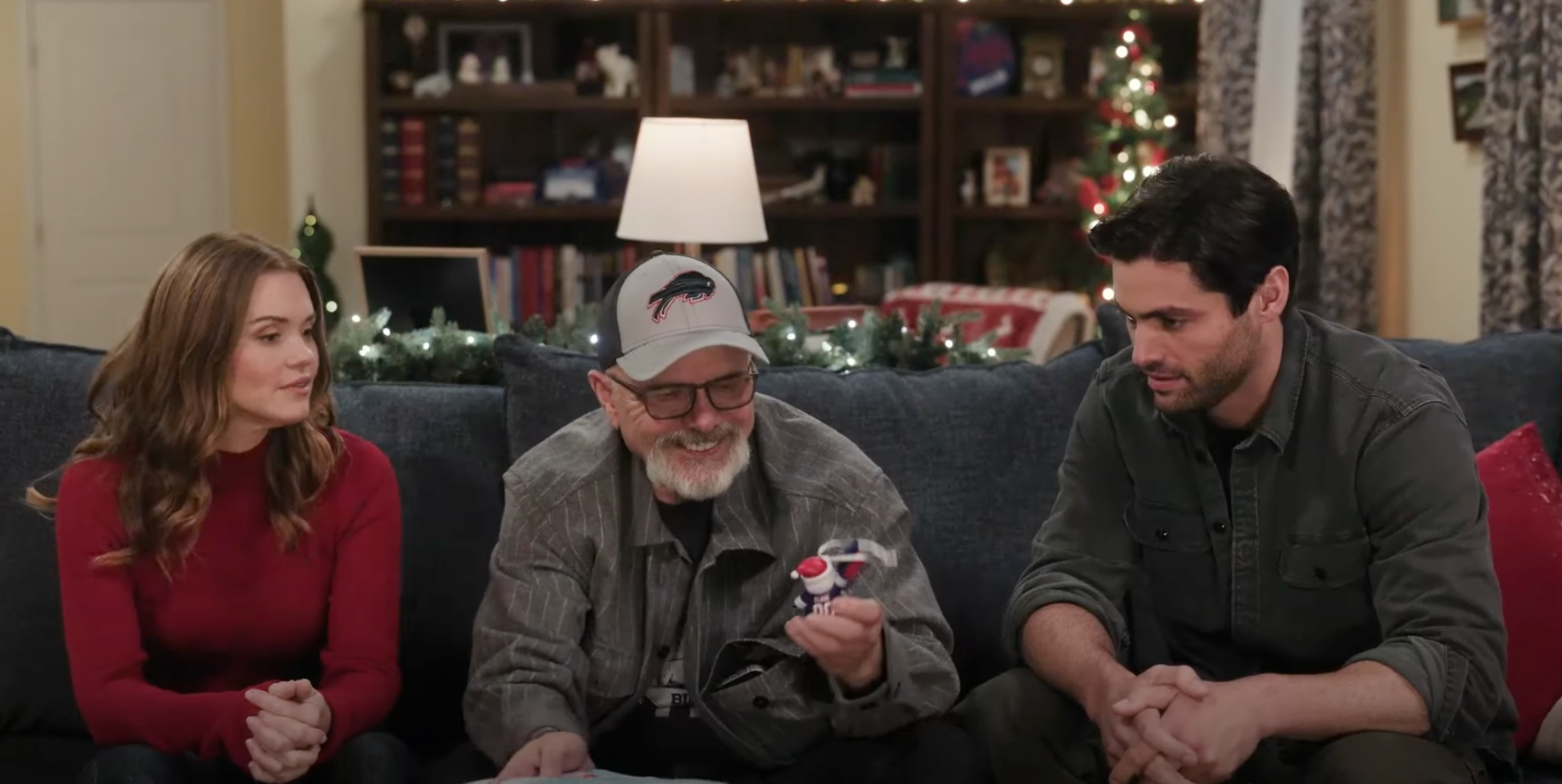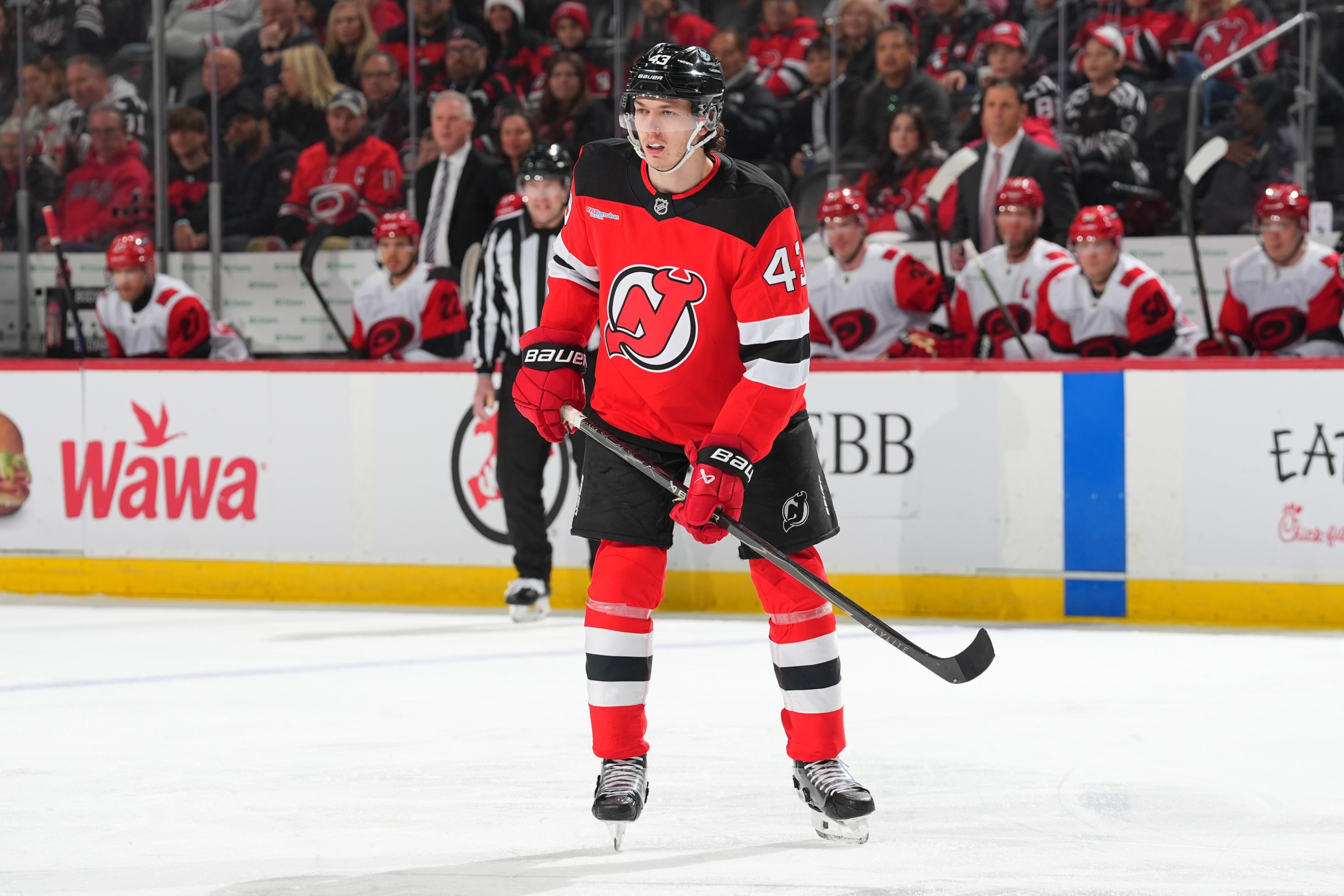There are a number of reasons why I will not reveal how many Hallmark movies I've seen, and only one of them is that I myself have tried very hard to avoid knowing the precise number. Whatever it is, that number is surely more than I could bear to look in the face. Even accounting for the fact that every Hallmark movie is 83 minutes long, the final tally would add up to literal weeks of my life, the only one I have or will have, that have been irretrievably spent watching former child stars with blowouts make concerned faces in a gazebo, or two attractive soap-opera actors almost kiss after a spontaneous and notably low-intensity snowball fight, but not actually kiss.
There are things I know about the Hallmark Cinematic Universe that no one would or should ever want to know. I have my own awful Bill Simmons-style pantheon of Hallmark stars and the various types of Hallmark movies. I have, not to put too fine a point on it, seen things that you people wouldn't believe. I can tell you, but will not tell you, about the people that direct these films. I once saw a movie with a harvest theme in which two characters went on a date to see a band called McBanjo. I saw one that Mariah Carey directed. I saw one that was, as far as I could tell, primarily about avalanche safety, but which had a romance grafted onto it so that it could reach a larger audience. I saw one in which Wallace Shawn played an angel. I saw a Hanukkah-themed one in which a Jewish character didn't know what a hammer was.
I have watched most but not quite all of these because of a podcast I do with a friend about Hallmark movies, but also because I find the movies themselves fascinating and generally pleasant. They are not meant to be watched the way that I watch them for the podcast, no one involved with these movies intended to have anyone taking notes on them, and in most cases are not meant to be watched very closely at all. Before a bleak plurality of filmed entertainment became something designed to be on in the background while you do something else, Hallmark movies were something that you have on in the background while doing something else. You look up and see two conventionally good-looking people in sweaters drinking hot cocoa on what is obviously a very hot day. You look up again and one of them is eating a wan Christmas cookie and reacting as if they have just seen the true face of god. This is just how it is. I like them, mostly.
But the ideal way of watching Hallmark stuff is predicated on spending some portion of the time spent watching these movies not watching these movies; you must look down, at whatever else, before you can look up and see those things. If you look at the screen the whole time, though, Hallmark movies are deeply but not necessarily interestingly uncanny. They are movie-shaped, and more or less movie-sized, but they do not always follow or even seem to acknowledge the rules that other movies follow; plots bag and bloat and blurt, the action stops so that characters can tell each other about their relationships with their parents, or with Christmas, or with the town of Christmas Falls, Vermont.
When this happens in, say, Twin Peaks: The Return, that stiltedness is tense and loaded; you sense a filmmaker trying to get you on the wrong foot, and put viewers in a more vulnerable and less familiar and so more receptive position. There are times in your better Hallmark movies where the filmmakers are also playing with a viewer's expectations, albeit much more gently, but there are many more instances in the many lesser Hallmark movies where this sort of thing happens organically—one of those snowball fights or trauma-swapping exchanges kicking up out of nowhere, a date scene in a restaurant that has nothing in common with any experience of a date or restaurant on record, another useful but surprisingly detailed disquisition on avalanche best practices.
Watch enough of these movies to give yourself the Stockholm syndrome variant that I have given myself, and you will come to treasure these moments of uncanniness, and to understand them as part of the strange syntax of Hallmark cinema. The rooms in which the scenes are shot are generally somewhere in Canada, but the restaurant being used as a location—and Hallmark does tend to use "actuals," as opposed to sets—does not serve those strange Jolly Rancher-colored glasses of wine or enormous spongy orange dinner rolls. The waiters in those establishments do not grandiosely present plates of white stuff and say things like "the lobster tallegio." What you know of the world as it exists or of movies as they exist will not help you navigate any of this, really. But you can learn your way around the Hallmark version of it, and eventually you will not be surprised—you will, maybe, even be delighted—when someone is served a pastel-hued drink in a martini glass with a whole-ass candy cane sticking out of it.
Is that familiarity with this particular type of uncanniness useful? If you are planning on starting your own Hallmark podcast, it is maybe useful. If you are in a situation where you have to talk to normal people about Hallmark movies, I can inform you with some confidence that it is not useful. It makes it harder, in fact, to explain what is truly strange about these movies—not the gentle and frictionless romantic-comedy plotting and gestures, but the marshmallow world in which all of that stuff very slowly and very softly unfolds. I have tried to explain the dinner roll thing to people, their ubiquity and their uncommon size and periodic weird shininess, and I have watched their faces change. You must first sit at the table before you can understand how strange the fare on offer truly is. But maybe it is easier for me to just show you:
What we have here is a trailer for Holiday Touchdown: A Bills Love Story, the second film in Hallmark's collaboration with the NFL. Last year's, which centered around the Kansas City Chiefs, featured enough Trent Green screen time that we felt obligated to write about it. Various classic Hallmark elements are present even in the trailer: a very gentle mystery and a fairly chaste romance, a few surprising veteran character actors in winter clothes, twinkling music. The presence of a bunch of Guy-grade Buffalo Bills players in the proceedings is different and the implied possibility of a miniature Sopranos reunion between Joe Pantoliano and Steve Schirripa is intriguing if you are inclined towards being intrigued by stuff like that. Per People, the Bills in the trailer—you've got Ray Davis, Dion Dawkins, and Damar Hamlin—are just the beginning:
The Bills’ head coach Sean McDermott, tight end Dawson Knox, long snapper Reid Ferguson, defensive tackle DeWayne Carter, and wide receiver Joshua Palmer are also expected to appear, as will Bills legend Jim Kelly, former players Steve Tasker, Thurman Thomas, and Scott Norwood and Bills’ play-by-play announcer Chris Brown.
The average Hallmark movie just does not have that many speaking parts in it; if every one of those Bills demi-luminaries has one line, this will be something like the network's equivalent of Robert Altman's Nashville. I would not say that I am concerned about this, exactly; even the Hallmark Cinematic Universe must grow and change, and most of the ways in which it has done so over the last few years have been good. It is now capacious enough to include both gay people and guys who seem like Pantoliano; this isn't even Schirripa's first Hallmark movie. But I have spent a lot of time here, and am not immune to the feeling of melancholy that comes with watching something you know about become something you know less about. All the Hallmark movies I've seen with howlingly fake sports teams and leagues and alternate-universe versions of ESPN in which visibly Canadian anchors inexplicably set up the highlights of youth sport championship games—have these budget-conscious, story-mandated improvisations been replaced with the real-world star power of Dawson Knox and Steve Tasker?
My apprehensions on this front did not last all the way to the end of the People blog. Embedded near the end of that post is the poster that Hallmark worked up for the film. It is familiar enough, with the two attractive stars of the film sitting on the crossbar of a goalpost decorated with Christmas lights; I am aware of what it implies about me and the decisions I have made to this point to describe such an image as "familiar," but I have a post to finish. But while the presence of NFL-licensed apparel and logos speaks to that new era, the film's tagline, included at upper left, is a reminder that the old ways are not yet gone.
That tagline is: "Go for four. You might find forever." The wordplay is easy enough to understand; the pacing of it, if you are old enough to remember when movies had taglines, is easy to parse. However, "go for four" is not a football term. That "four" is phonetically similar to the first syllable of "forever" is inarguable; that "go for four" is not something that anyone has ever said in a football context for the entirety of the game's long history is, I think, also inarguable. There is no four-point play; fourth down and the fourth quarter come whether you go for them or not. It is, probably, intended as a reference to going for it on fourth down, which is the football equivalent to the sort of bold romantic gamble that Hallmark characters tend to take around the 75-minute mark in the average film, when they come to their senses and realize that what they really want is to give up their big-city corporate job and return home to build a life with a hunky local veterinarian and see their parents more often.
Again, if you have seen enough Hallmark movies—really, if you have seen one—you can sort of see it. But none of that is there to find in "Go for four," and that is a relief. Hallmark is making far fewer films this year than last, but they remain one of the few cable networks that is actively making new stuff. Go For Four feels like a promise that, despite all the glamour associated with "the long snapper is in it," they will keep on doing it their way—inexplicably, uncannily, from the heart, and with Joe Pantoliano.






